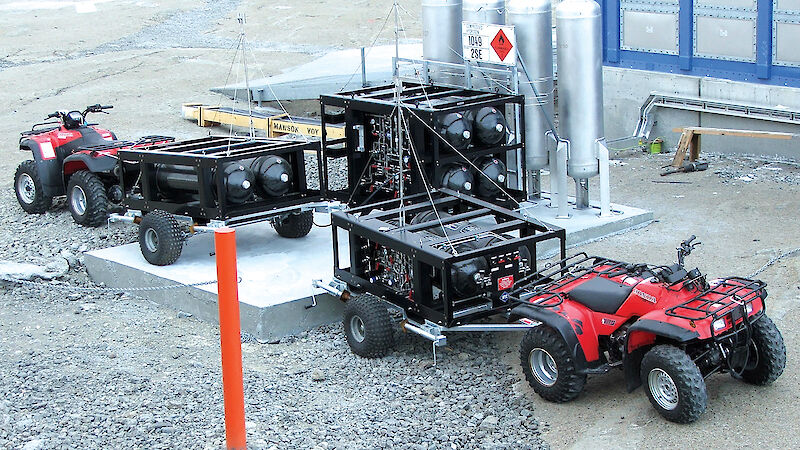Expeditioners working in Australia’s remote Antarctic field camps will soon be baking bread, heating their huts and powering their laptops with clean, green hydrogen.
The Australian Government’s hydrogen demonstration project, led by the Australian Antarctic Division (AAD), will operate out of Mawson station and a nearby penguin-monitoring field camp at Béchervaise Island, this summer.
The project — the first of its kind in Antarctica — aims to investigate safety and operational aspects of using hydrogen, with a long-term view to running Australia’s Antarctic field camps and stations without fossil fuels.
“As the cost of fossil fuels continues to rise, we need to explore renewable energy options to supplement or completely replace them,” AAD engineer Peter Magill said.
“We have already reduced our fossil fuel use at Mawson by installing two wind turbines. And we can reduce it further by using any electricity generated by the turbines, in excess of station requirements, to produce hydrogen.”
Mr Magill said the hydrogen, which is made by electrolysing or splitting water molecules into their component hydrogen and oxygen molecules, will be transported in cylinders on a specially designed trailer across the sea ice to Béchervaise Island, some four kilometres away. The trailer will be towed using a hydrogen-powered quad bike modified at the University of Tasmania. The hydrogen will then be used in a hydrogen/LPG gas stove for cooking and in a fuel cell that will generate electricity to run heaters, lights, computers and a bread-maker.
Hydrogen generated by the wind turbines will also be stored in high pressure vessels at Mawson. If the demonstration project is a success, this hydrogen could be used to provide electricity and heating for the station when the wind drops, through a large scale fuel cell system or in an internal combustion engine generator.
“This will reduce Australia’s greenhouse gas emissions in Antarctica, as well as our intercontinental transport costs for delivering petrol, diesel and gas to our stations and field camps,” Mr Magill said.
The hydrogen demonstration project is supported by a $750 000 grant to the AAD from the Australian Government and financial contributions from the Swedish Energy Agency and BOC. The University of Tasmania is undertaking modelling work to identify the infrastructure needed to run Australia’s stations and field camps on 100 percent hydrogen.

